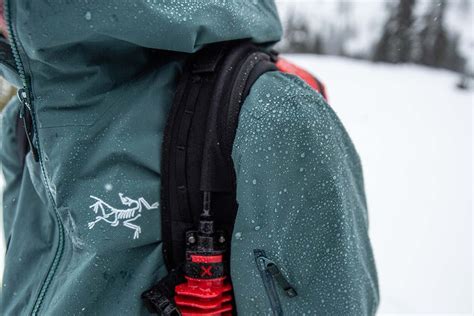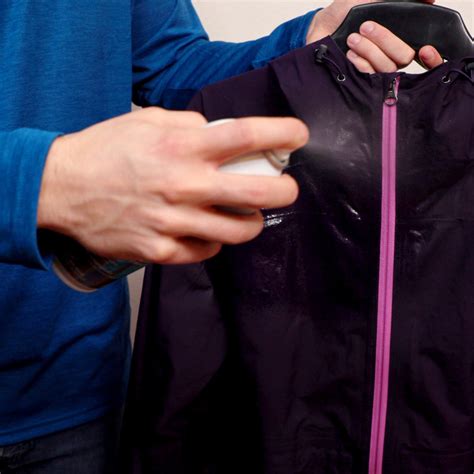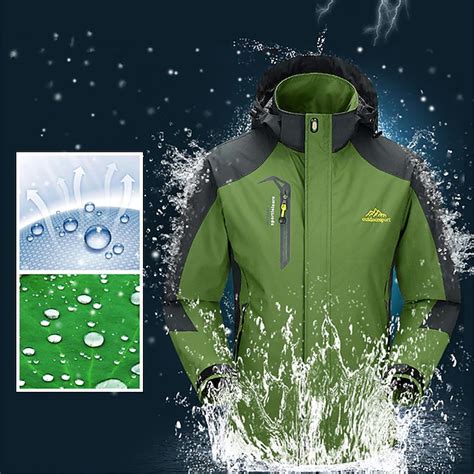There’s nothing quite like the feeling of stepping out into a downpour and staying completely dry, thanks to a reliable rain jacket. But over time, even the best waterproof gear can start to wet out, leaving you damp and uncomfortable. This isn’t necessarily a sign that your jacket is ruined; often, it just means its Durable Water Repellent (DWR) coating needs a refresh. The big question then arises: should you opt for a DWR wash-in treatment or a spray-on application?
Understanding Your Jacket’s DWR Coating
Most modern rain jackets achieve their water repellency through a combination of a waterproof membrane (like GORE-TEX or eVent) and an external DWR coating. While the membrane prevents water from passing through the fabric, the DWR is crucial for making water bead up and roll off the surface. When the DWR fails, the fabric “wets out,” meaning it absorbs water, which can reduce breathability and make you feel cold and clammy, even if the membrane is still technically waterproof.

The Wash-In DWR Method
Wash-in DWR treatments are designed to be applied directly in your washing machine. These products clean your garment while simultaneously depositing a new DWR coating onto the fabric fibers. They are often recommended for garments where you want to ensure complete and even coverage, including hard-to-reach areas.
Pros of Wash-In Treatments:
- Even Coverage: The washing machine ensures the DWR is distributed uniformly across the entire garment, both inside and out.
- Ease of Use: Simply add to your washing machine cycle according to the product’s instructions.
- Restores Breathability (indirectly): By ensuring an even DWR coating, it helps the garment’s breathable membrane function optimally by preventing wetting out.
Cons of Wash-In Treatments:
- Internal Coating: Can apply DWR to inner linings, which might not be desirable for some multi-layer jackets, potentially affecting wicking properties if the lining is designed to wick moisture.
- Less Targeted: If only specific areas are wetting out, a wash-in treats the entire garment.
How to use: Always clean your jacket thoroughly first with a technical wash (never standard detergent). Then, follow the wash-in DWR product instructions, using the recommended amount and cycle setting, typically on a gentle or delicate cycle with a cool to warm wash.

The Spray-On DWR Method
Spray-on DWR applications are a more targeted approach. These products come in a spray bottle and are applied directly to the exterior of a clean, damp, or dry garment. They are excellent for spot treatments or for garments where you want to avoid treating the inner lining.
Pros of Spray-On Treatments:
- Targeted Application: You can focus on areas that need it most, like shoulders, sleeves, or high-wear zones.
- Preserves Internal Wicking: Ideal for garments with wicking linings or insulation, as it avoids treating the inside.
- Control: Allows for visual inspection and correction during application to ensure evenness.
Cons of Spray-On Treatments:
- Less Even Coverage (potentially): Requires careful application to avoid missed spots or over-saturation.
- More Effort: Can be more time-consuming to apply meticulously compared to a wash-in.
How to use: Ensure your jacket is clean and either damp or dry (check product instructions). Lay the jacket flat or hang it up. Spray evenly from about 6-8 inches away, ensuring full coverage without oversaturating. Wipe off any excess, especially on zippers or toggles, and then follow the drying instructions, which often include heat activation.

Which Method Should You Choose?
The best method often depends on your specific jacket and needs:
- For unlined shell jackets: Both wash-in and spray-on can work well. A wash-in might be easier for full coverage.
- For insulated or lined jackets (especially those with wicking linings): A spray-on is generally preferred. This avoids applying DWR to the insulation or wicking fabric, which could impair their performance.
- For targeted repairs: If only certain areas are wetting out (e.g., shoulders from backpack straps), a spray-on offers precision.
- For ease and speed: A wash-in can feel quicker for a full garment treatment.
Always check the care label of your jacket and the instructions of the DWR product you choose. Some brands specifically recommend one method over another for their garments.

Tips for Optimal DWR Restoration
- Clean First: Regardless of the method, always clean your jacket thoroughly with a technical cleaner designed for waterproof breathable fabrics before applying DWR. Residues from regular detergents can inhibit DWR performance.
- Heat Activation: Most DWR treatments require heat to bond effectively to the fabric. This typically means tumble drying on a low heat setting or ironing on a low, synthetic setting (with a towel between the iron and fabric) after application. Always check product instructions.
- Don’t Overdo It: Applying too much DWR doesn’t make it more waterproof and can sometimes lead to a sticky finish or reduced breathability. Follow the recommended dosages.
- Regular Maintenance: Don’t wait until your jacket is completely soaking through. A quick refresh of the DWR as soon as you notice wetting out will extend the life and performance of your gear.
Conclusion
Restoring the DWR on your rain jacket is a straightforward process that can significantly extend its lifespan and maintain your comfort in wet conditions. Whether you choose a convenient wash-in or a targeted spray-on depends on your jacket’s construction and your personal preference. By understanding the pros and cons of each and following the instructions carefully, you can ensure your favorite rain gear keeps you dry for many more adventures to come.




